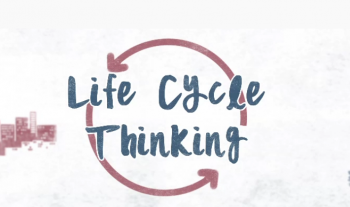Life Cycle
Life Cycle Thinking (LCT) is about going beyond the traditional focus on production site and manufacturing processes to include environmental, social and economic impacts of a product over its entire life cycle.
The main goals of LCT are to reduce a product’s resource use and emissions to the environment as well as improve its socio-economic performance through its life cycle. This may facilitate links between the economic, social and environmental dimensions within an organization and through its entire value chain.
Looking at the industrial sector, taking LCT as an approach means going beyond the more narrow traditional focus on an enterprise’s production facility. A product life cycle can begin with the extraction of raw materials from natural resources in the ground and the energy generation. Materials and energy are then part of production, packaging, distribution, use, maintenance, and eventually recycling, reuse, recovery or final disposal.
In each life cycle stage there is the potential to reduce resource consumption and improve the performance of products.
-
Guidance to Provide Footprint Information on Sustainable Alternatives
As there is an increase in communication of concrete recommendations for better solutions and alternatives to build a better economy that protects...
Read More -
SCP Hotspots Analysis Tool (SCP-HAT)
The SCP Hotspots Analysis Tool (SCP-HAT) aims at identifying the hot spot areas of unsustainable production and consumption in order to support...
Read More -
Introduction to Life Cycle Thinking
This is one of the Life Cycle Initiative E-learning modules, with courses in English, French, Arabic and Spanish
Read More




